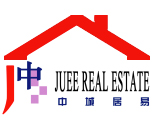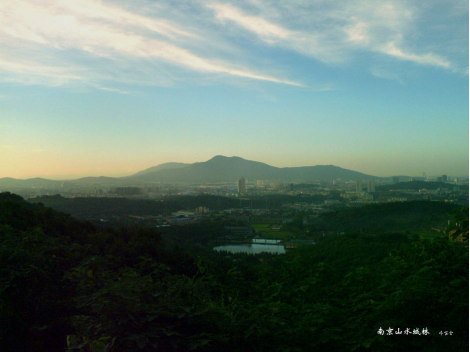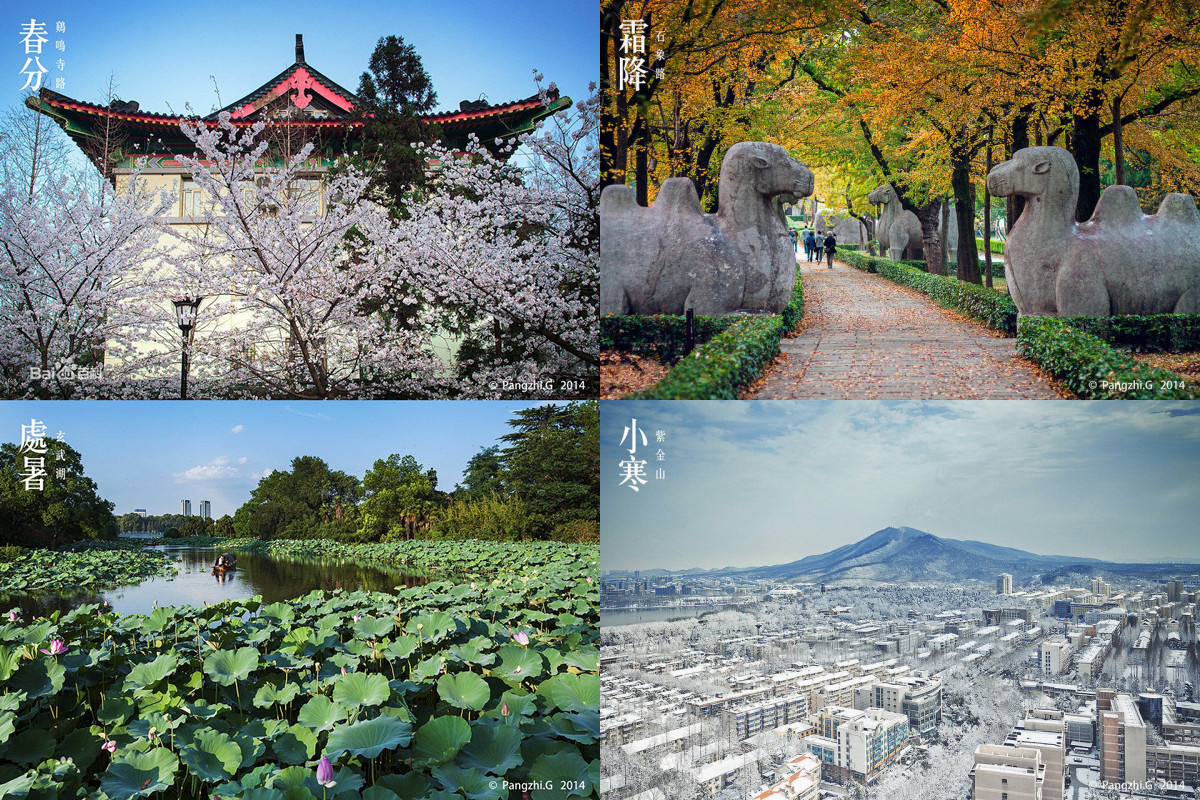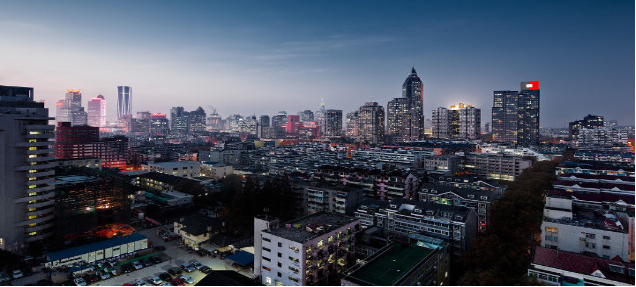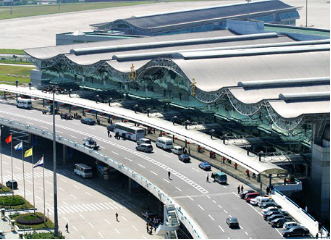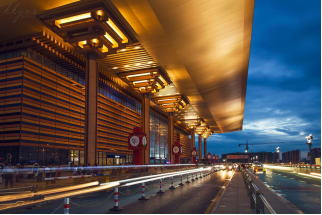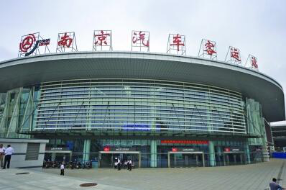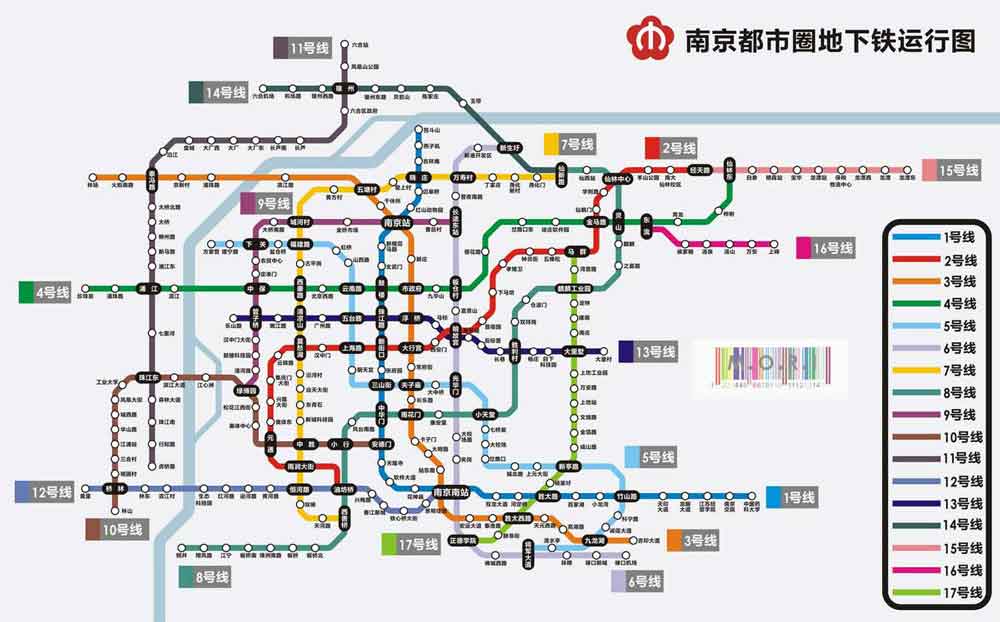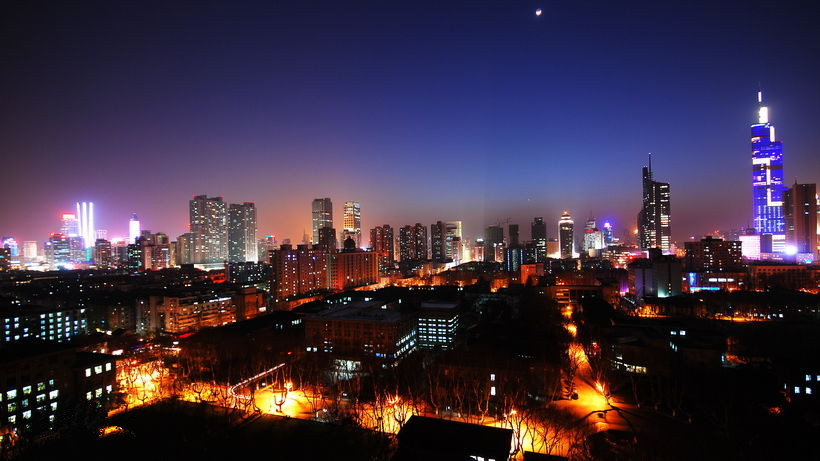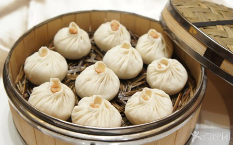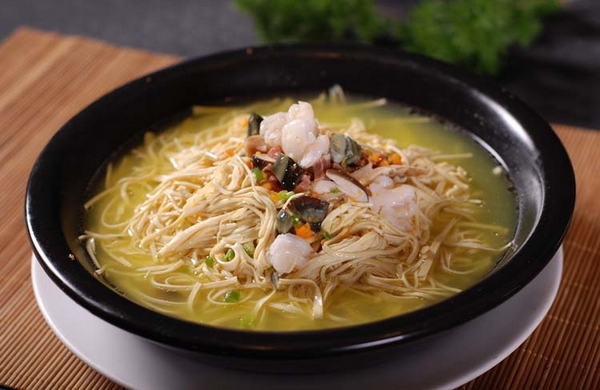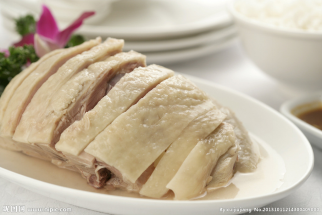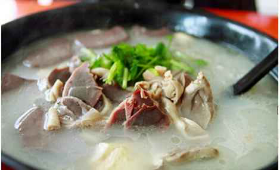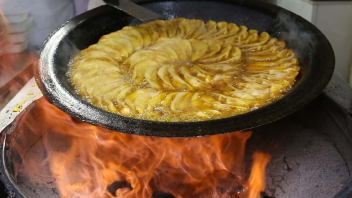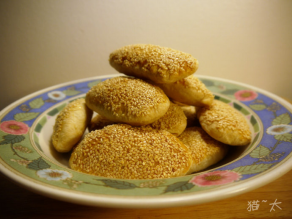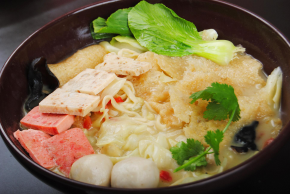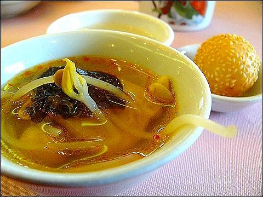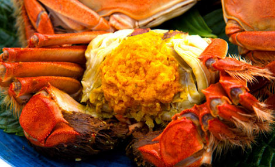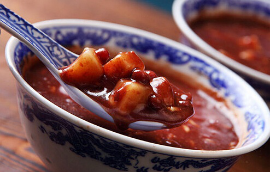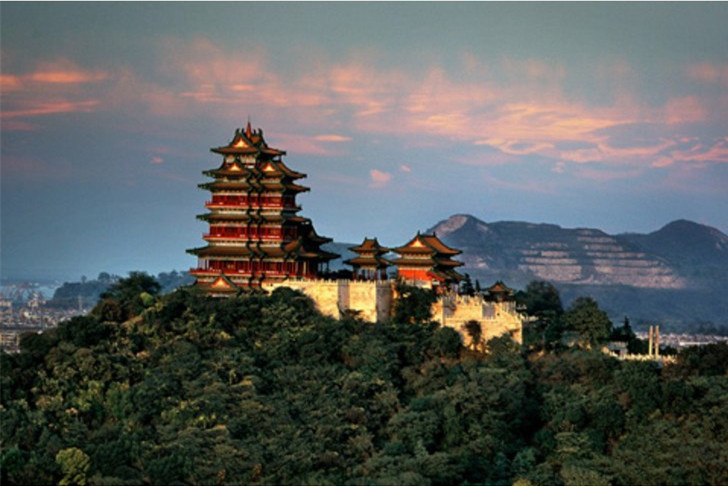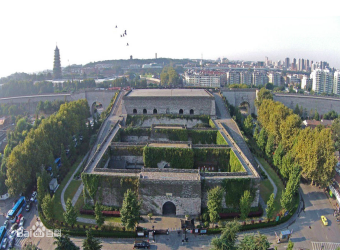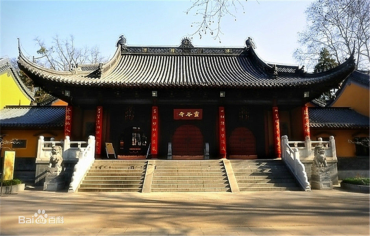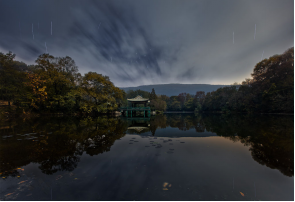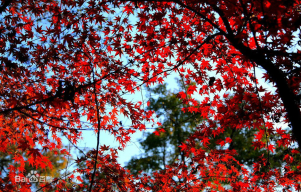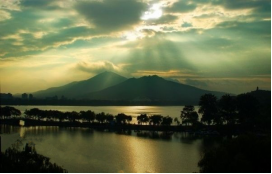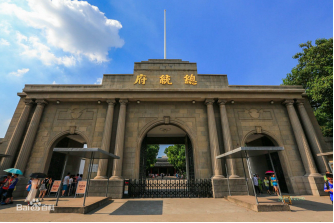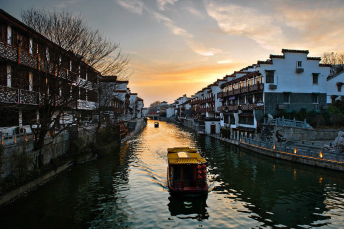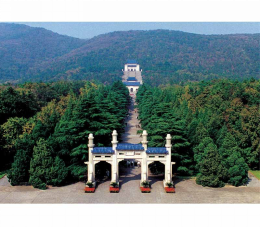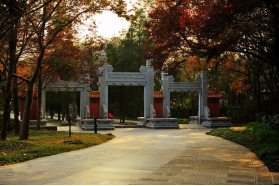City guide: Nanjing
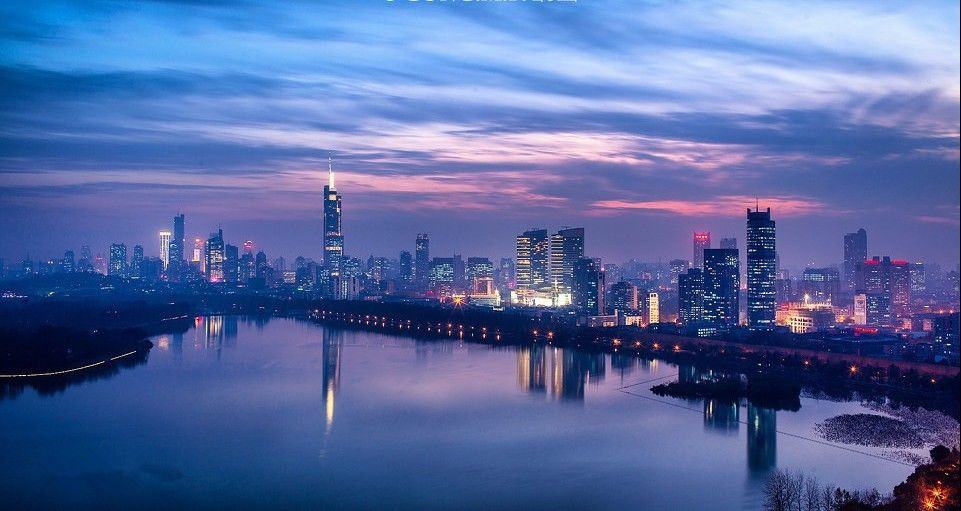
1.General introduction | 3. Education & Health care |
Location & population | International Schools |
Climate | Hospitals |
Economy & industry | |
2. Transportation | 4. Recreation |
Metro | Shopping |
Railway | Nightlife |
Air | Cuisine |
Attractions |
1. General introduction
Location & population
Economy & industry
2. Transportation
Train Nanjing is an important meeting point of the country’s north-south and east-west railway trunks, which connects northern, eastern and middle regions of the country.The passenger transportation is handled at two railway stations: Nanjing Railway Station is operating regular and partial high-speed trains and South Railway Station is operating high speed ones.
Long-distance Bus Centering on Nanjing, highways radiate to Shanghai, Huai’an, Hefei, Hangzhou and Nantong, etc, which makes long-distance travel by bus very convenient in the area. At present, there are eight main long-distance bus stations in Nanjing, operating buses to Shanghai, Beijing, Qingdao, Hangzhou, Guangzhou and Yiwu, etc.
Metro
With its subway line 1 put into service in 2005, Nanjing became the
6th city in mainland China having subway lines. Presently, the city’s
subway mileage open to traffic is around 112 miles (180 km), consisting
of line 1, line 2, line 10, line S1 and line S8. Meanwhile, there are
four lines under construction, line 3, line 4, line S3 and line S7. By 2030, there will be 17 lines serving the citizens.
City Bus Compared with the subway, city buses are more flexible. They can take passengers almost anywhere they want in the city. The ticket fare is CNY 1 for regular buses and CNY 2 for air-conditioned ones. Taxi Taxis travel the main streets in the city. Compared with the big cities like Beijing and Shanghai, it is not difficult to hire one. The taxi fee for first three kilometers (about 1.9 miles) is CNY 9 and CNY 2.4 for extra per kilometer (about 0.6 mile) in daytime and CNY 2.7 in night time; in addition, a fuel surcharge of CNY 2 / ride is charged. Tip: Be careful of taking taxi from a bus station or railway station. Unlicensed taxi touts can be very expensive. Rental Car
The car rental service in Nanjing has flourished in recent years. The
types of rental car include mainly Buick, Audi, Mercedes, Mazda, Toyota
Coaster, large and small Jinlong and Yutong. The price varies based on
car types and rental duration. For reference, a Hyundai Elantra costs
about CNY 220 per day with a day limit of 300 kilometers and a Benz S600
costs about CNY 1800 with a day limit of 80 kilometers. The extra
kilometers are charged accordingly too. The service fee for driver and
toll fee are not included. Tips:
and requirements in Chinese will be appreciated. 2. Passengers may be required to provide valid identification proof and deposit. 3. International Driver’s License is not recognized in China. 3. Education & Health care International schools: 1.Nanjing International School
Nanjing International School is an inclusive learning community
inspiring international mindedness, personal excellence, creative thinking. The school was officially opened by a small group of
expatriate parents on October 14th 1992, with 5 students, NIS was a
school for very young children only. It was the product of parents who
were concerned that being in China should not present an obstacle to the family being together, nor to the children receiving a good education.
After several years in rented rooms in a local school, NIS moved with
a handful of students to the Dingshan Hotel (later called Shangri-La).
With the help of local businesses, six rooms were renovated for use as a school. Between 1997 and 2004, NIS took over more and more rented facilities at the Shangri-La. The school grew from 35 to 300 students during this time. In 2004, NIS moved to its own purpose-built
premises in Xianlin College and University Town, on the outskirts of Nanjing. Realising this dream was the culmination of a sustained team effort, lasting several years. The closeness of the NIS
community, so prevalent in the 1990s, is something we still value highly
today. Our school is a friendly and open place, and we hope that your family too, like those before you, will feel welcome and at home in our school. Address: Xue Heng Lu 8 Xian Lin College and University Town Qi Xia District, Nanjing PRC 210023 中国南京市栖霞区仙林大学城学衡路8号 邮编:210023 Tel: + 86 25 8589 9111 2.EtonHouse International School
The EtonHouse Group is a Singapore-based educational group that
provides educational services through International Schools, Pre-Schools
and Early Childhood Teacher Education Courses in 10 countries across Asia. Registered with the Ministry of Education in Singapore
and China, EtonHouse is a member of the Council of International
Schools. Since its establishment in 1995, the Group has grown to 90
international schools and pre-schools operating in nine countries –
Singapore, China, India, Indonesia, Japan, Korea, Malaysia, Cambodia and
Vietnam attended by over 9000 children from more than 61 different
nationalities. EtonHouse is also in the process of evaluating
opportunities in other parts of Asia, Middle East and beyond.
The curriculum varies between the schools while maintaining the common
vision of developing empowered young individuals, enthusiastic life-long
learners and confident global citizens of the future. Through its
curriculum, EtonHouse strives to focus on pedagogical integrity and
research based best practice, acknowledge and respond to each learner’s
full potential and develop an authentic partnership with families and community.
Address: No.8, Qingaonanlu, Jianye District Nanjing, P.R. China 210019 中国南京市建邺区青奥南路8号 友谊街和双闸路交叉口 Ph: +86 025 8669 6778 Fx:+86 025 8669 1698 Email: enquiry-nj@etonhouse.com.cn Web: http://nanjing.etonhouse.com.cn Hospitals: 1. Jiangsu Provincial People’s Hospital (The First Affiliated Hospital of Nanjing Medical University) Location: Nanjing Address: 300 Guangzhou Road, Nanjing, Jiangsu 210029 Phone:86-25-8371 4 511 or 8371 4511 Fax:86-25-8372 4440
This hospital is the finest medical center and health care
organization in Nanjing and throughout the Jiangsu Province, providing
an excellence in patient care, education and research. It is fully
affiliated to Nanjing Medical University and recognized as well as The
First Affiliated Hospital of Nanjing Medical University. The medical organization is authorized by many insurance companies and it provides VIP wards for international travelers and expatriates. An affiliated pharmacy to the hospital is available. 2. General Hospital of Nanjing Military Base Location: Nanjing Address: 305 Zhongshan Road East, Nanjing, Jiangsu Phone:86-25-8482 6808
This is major military medical center and it accepts civil patients
as well. The hospital provides VIP wards to international travelers and
expatriates. A pharmacy affiliated to the hospital is available. 3. Nanjing Drum Tower Hospital, Nanjing University Location: Nanjing Address: 321 Zhongshan Road, Gulou (Drum Tower) District, Nanjing, Jiangsu 210008 Phone:86-25-8310 5860 Fax:86-25-8331 7016 Website:http://www.drumtowerhospital.com
Nanjing Drum Tower Hospital, or Gulou Hospital as well, is a
university hospital affiliated to Nanjing University Medical School.
The hospital was initially founded in 1892 by Dr. William Edward
Macklin, with the assistance of Prof. Frank Eugene Meigs and Dr. James
Butchart. Dr. Daisy Macklin joined the staff later. Drs. Macklin came
from Stratford of Ontario, Canada, and both of them were parishioners of
St. James Anglican Church. Prof. Meigs worked for the Church of Christ of the United States. At that time, the hospital was widely known as “Ma Lin Hospital”, after the Chinese name of the Founder. After
1949, the hospital has been run by the public sector of the local
municipal government and became a university affiliated hospital in early of 1990s. The hospital now possesses 1,460 patient beds and employs a staff of more than 2,500. The hospital is located in
downtown core of Nanjing and has VIP wards for international travelers and expatriates. The pharmacy is available. 4. Recreation Shopping
The main shopping streets in Nanjing include the area near Xinjiekou
(the city central area), Hunan Lu in the northern part of the city near
Xuanwu Gate and Taiping Nanlu and Fuzimiao area in the south. Xinjiekou
As the central landmark of the city, the downtown area of Xinjiekou
is both the transport and business center of the city. Hotels including
Jinling Hotel, a metro station, public buses and other tourist
facilities provide tourists with the convenient accommodation and access
to every corner of the city. Department stores, brand-name stores and large shopping centers in this area sell dazzling world-famous brands.
Fuzimiao Market This all-round wholesale center is the retail source for many stores. You can find anything here ranging from socks to electronic toys. Although a wholesale market, even an individual customer coming to buy a T-shirt won't be refused entry. Address: No. 28, Dashiba Jie Hunan Lu
Located right inside the Xuanwu Gate of the city's ancient wall in
the northern part of the city, there is an east-west street called Hunan
Lu. This street ranks as the second most popular street in Nanjing
after Xinjiekou. The beautifully decorated street has hundreds of
clothes shops, department stores and restaurants with the famous
Shiziqiao Food Street in the middle. It is a good place for both
shopping and taking guests out for dinner. Taiping Nanlu
Walking eastward from the Xinjiekou Crossing you find Taiping Nanlu,
an avenue running north - south to Zhongshan Donglu. The avenue is a home to brandname stores selling a variety of items from gold and jade ornaments to home appliances. Jinling Department Store
East to the five-star Jinling Hotel, it is a home to worldwide
brands. A selection of clothes, leather, cosmetics, watches and fine jewelry work satisfy buyers. Culture Street - Changjiang Lu Start from Xinjiekou Crossing and go north one block to reach Changjiang Lu. It is known as a cultural street with Xuyuan Garden, Provincial Art Museum, People's Hall, Jinling Library Building and the City Art Center along both sides. Antique Market - Chaotiangong
Chaotian Gong (Palace) was originally established in the Ming Dynasty
(1368 - 1644) as a school for educating noble children in court
etiquette. The buildings house a range of local institutions from an
antique market to a Qigong (a Chinese Martial Arts) institute. The
market is a meeting place for many Chinese antique collectors some of
whom run small businesses at their own stalls. Come and search for some treasure trove. One thing you should bear in mind is that the sellers
are very convincing. Don't part with your money unless you are able to tell the real things from fakes. Sci-Tech Street - Zhujiang Lu
Further northward from Changjiang Lu is a parallel street dotted with
stores selling all sorts of electronic products including mp3, pocket
appliances, video records, computer peripherals, speakers and so on. Also known as Zhujiang Lu Sci-tech Street it is said to be the largest of its kind in Eastern China. Nightlife
If you’ve recently moved to Nanjing- or are just having one of those
homesick days- a few friendly faces and some home comforts will soon get
you right. Nanjing has several well-known bars where you can find
English and Chinese-speaking drinking companions, enjoy a taste of home, and if you are lucky, even cheer on your local sports team. 1)Jimmy’s
Everyone knows Jimmy’s. The menu has reasonably priced burgers,
pizzas and hot dogs, which are also available for delivery. Jimmy’s
organizes regular pub quiz nights and the website shows up to date
listings of the sports fixtures being screened and special offers
available- meaning this is the perfect place to go to watch your
favorite sports team. Jimmy’s was even open for middle-of-yhe-night
World Cup matches, and we expect it to screen other big sporting events,
too, regardless of the time difference. Add: Block of Gourmet Food&Leisure, 193 Shigulu, Baixia District, Nanjing 地址:南京市白下区石鼓路193号石鼓湾美式休闲街区7号楼 Tel: 025 8679 2599 Opening hours: 16:00-24:00 Getting there: Take metro line 2 to Shanghailu Station(上海路站). 2)Blue Sky
Pool night on Wednesdays and sports matches on big screens, this is
the perfect place to go with a group of friends, for grilled steaks, meat pies, and a great selection of local and international beers. It is a solid option, and easy to find as it is on a main road. Add: 77 Shanghailu, Gulou District, Nanjing 地址: 南京市鼓楼区上海路77号 Tel: 025 8663 9197 Opening hours: 10:30-14:00 and 17:00-22:00 Getting there: Best way to get there is to take metro line 2 to Shanghailu Station(上海路站). 3)Finnegan’s Wake
You’ll always get a warm welcome at Finnegan’s Wake. The downstairs
is a bar, often with live country and folk music from a range of local
and expat performers. And there are regular open mic nights. Upstairs is
quieter and you can order Irish stew, fish and chips, and a range of
other hearty dishes, although prices are probably higher than the
average student or backpacker budget. If you find it easier to make friends through sports, you’ll also find a local football and rugby
teams celebrating after league matches here. Add: 6 Xinanli Jiequ, 400 Zhongshannanlu, Biaxia District, Nanjing 地址: 南京市白下区中山南路400号熙南里街区6号 Tel: 025 5220 7362 or 13057623789 Opening hours: 17:00-24:00 Getting there: Take metro line 1 to Sanshanjie Station(三山街站). 4)Talking Bar
Chinese owner Jacky opened his first bar because he wanted a job
where he could spend everyday drinking with friends. He now owns five
bars, some offering live music, others serving food, and all are well
priced and popular with the students crowd due to the location opposite
Nanjing Normal University. This place is perfect for the younger crowd, if you want to make local friends, or maybe find a language partner. Add: 9-101 Ninghailu, Gulou District, Nanjing. 地址: 南京市鼓楼区宁海路9-101号 Tel: 025 8320 0844 Opening hours: 10:00-02:00 Getting there: Take bus 3 or 20 to Nanyang Yangying Stop(南阳阳营站) 5)Secco
Warm apple strudel, schnitzel and noddles; if these are a few of your
favourite things you’re in luck as they are all served in generous
portions at Secco. There are two pool tables, darts, and large TV to
keep you entertained if you intend to go alone, or to help you make
conversation. The staff is very helpful and speak English, German and
Chinese. They’ll even give you taxi vouchers for you next visit. Between
18:00 and 21:00, it offers buy-one-get-one on drought beers and there
is also a cocktail menu. Add: 1F Super 8 Hotel, 132 Changhonglu, Jianye District. 地址: 南京市建邺区长虹路132号速8酒店楼下 Tel: 025 8337 0679 or 138 1402 0098 Opening hours: 18:00-02:00 Getting there: Take bus 28, 83, 127. 818 or Y18 to Changhonglu Stop(长虹路站). 6)Blue Marlin
The three branches of the Blue Marlin found in Nanjing are all
well-known expat haunts. They boast imported beers, a cocktail menu and
reasonably priced Western food such as burgers, pizza and salads. Most
nights feature live music from 20:00 with a mix of local and foreign
performers for a very friendly atmosphere- good for those who love
meeting new people! The 1912 branch has belly and pole dancers upstairs and is very crowded at weekends; if you are looking for a quiet place,
the other two would be better. Add: 1912, 8 Taiping Beilu, Xuanwu District, Nanjing. 地址: 南京市玄武区太平北路8号 Tel: 025 8453 7376 Opening hours: 16:30-02:00 Getting there: Take bus 2,3,31,44,65,68,80,95,201,304,313,902 to Daxinggongbei stop (大行宫北站). Jiangning branch Add: Number 7, Baijiahu 1912 Area, 1680 Shuanglong Dadao, Jiangning Diestrict, Nanjing 地址: 南京市江宁区双龙大道1680号百家湖1912街区7号 Tel: 025 5239 3289 Opening hours: 10:00-02:00 Getting there: Take metro line 1 to Baijiahu Station(百家湖站). Xianlin branch Add: A19, 12 Xianyin Beilu, Qixia District, Nanjing 地址: 南京市栖霞区仙隐北路12号A19 Tel: 025 8579 2838 Opening Hours: 10:00-02:00 Getting there: Take bus 130,139 or 310 to Xianyin Beilu Wenfanlu Stop(仙隐北路文范路站). Cuisine
The cuisine in Nanjing is also Jiangsu cuisine. Jiangsu cuisine
(simplified Chinese: 江苏菜; traditional Chinese: 江蘇菜; pinyin: Jiāngsū
cài), abbreviated to Su cuisine (simplified Chinese: 苏菜; traditional
Chinese: 蘇菜; pinyin: sū cài), is one of the Eight Culinary Traditions of
Chinese cuisine. It is derived from the native cooking styles of Jiangsu province. In general, Jiangsu cuisine's texture is characterised as soft, but not to the point of mushy or falling apart. For example,
the meat tastes quite soft but would not separate from the bone when
picked up. As the style of Jiangsu cuisine is typically practiced near
the sea, fish is a very common ingredient in cooking. Other characteristics include the strict selection of ingredients according to
the seasons, with emphasis on the matching colour and shape of each
dish and using soup to improve flavour. Here are the top ten Nanjing foods (in no particular order) that will drive any local wild. 1. Tangbao (汤包)
These steamed dumplings are sublime. Under an extremely thin layer of
dough hides a bomb of delectable broth and a ball of tender pork.
To eat these jiggly meat pockets, bite a small “window” on the skin,
drink up the broth, dip the rest in vinegar, then munch. Try
it at: Yinshi Jishi Tangbao (尹氏鸡汁汤包), No. 398 Mochou Road, Baixia
District 白下区莫愁路398号; open daily 6:30 a.m.-7:30 p.m.; RMB 11 (US$1.8) for eight pieces 2. Shredded tofu in chicken broth (鸡汁干丝)
Gansi, or finely shredded tofu, are a Nanjing food boiled in chicken stock with half a dozen goodies, such as ham, bamboo shoots and de-shelled shrimps. The soybean-based slices, which can be as thin as 1 millimeter, absorb an appetite-inducing meaty flavor from the broth.
Try it at: Nanjing Impressions (南京大排档), No. 2, Shiziqiao, Gulou
District 鼓楼区狮子桥美食街2号; +86 25 8330 5777; 11 a.m.-midnight; RMB 22 (US$3.5) per bowl 3.Duck soaked in brine (盐水鸭)
A most classic Nanjing food. This cold dish exemplifies Nanjing
chef’s unparalleled skills in cooking the fowl. The duck meat is well-seasoned, juicy and tender. Bones are easy to get rid of. To make the dish, free-range ducks are first simmered in brine, hung to dry for around three days and then served as chops.
Try it at: Plum Garden (梅苑), 2/F, Jinling Hotel, 2 Hanzhong Road,
Gulou District 鼓楼区汉中路2号金陵饭店2楼; +86 25 8472 2888; RMB 198 or US$32 per duck 4.Duck blood soup (鸭血粉丝汤)
Cubes of duck blood come with duck-bone stock with deep-fried firm
tofu, vermicelli and bits of duck organs, such as liver and gizzard.
The texture of the coagulated blood resembles bean curd: succulent, watery and tender. This soupy snack is a Nanjing food staple. Locals would order a bowl any time of the day. Try it at: Nanjing Impressions (南京大排档), No. 2, Shiziqiao, Gulou District 鼓楼区狮子桥美食街2号; +86 25 8330 5777; 11 a.m.-midnight; RMB 22 (US$3.5) 5.Pan-fried beef dumpling (牛肉锅贴)
These doughy purses, loaded with minced beef mixing diced ginger and spring onion, are fried until golden and crispy. The fragrant crescents provide a contrasting taste sensation: the outside is crunchy while the inside is moist and soft.
Try it at: Liji Halal Restaurant (李记清真馆), No. 1, Dading Xiang,
Pingshi Jie, Baixia District 白下区评事街打钉巷1号; +86 25 5225 7736; 5:30 a.m.-7:30 p.m.; RMB 4.5 (US$0.7) for five pieces. 6.Sesame pancake (鸭油烧饼)
The crumbly pastry comes in two types. The oval one is savoury, with
minced pork and spring onion; the round ones are sweet with melt-in-your-mouth sugar. For both flavours, the local secret is to enclose a lump of duck fat in the dough before baking. The white sesame topping brings in an aromatically sweet kick.
Try it at: Qifangge (奇芳阁), No. 12, Gongyuan Xi Jie, Qinhuai District
秦淮 区贡院西街12号; +86 25 8662 3159; open daily 7 a.m.-8 p.m.; RMB 1.2 (US$0.2) per piece. 7.Pidu noodles (皮肚面)
Get ready for an overwhelming gastronomic experience. Approximately
15 different ingredients, including pidu, mushroom, vegetable and
oftentimes pig liver, smother a bowl of steamy noodles. One portion is enough for two adults. Pidu is a star in Nanjing food. These
curly golden strips are actually sliced pig skin, which is boiled, wind-dried then deep fried. Try it at: Yiji Pidu Noodles (易记皮肚面), No. 103, Mingwa Lang, Baixia District 白下区明瓦廊103号; open daily 7:00 a.m.-8:30 p.m.; RMB 32 (US$5.1) per bowl. 8.Tofu jelly (豆腐涝)
Chunks of silky and jade-smooth bean curd are served hot with varied
seasonings. Common choices include pickles, dried little shrimps,
coriander, soy sauce, vinegar and chilli oil. A few vendors add chicken slices or beef stock for pumping up the flavour.
Try it at: Liufengju (六凤居), No. 144, Gongyuan Jie, Qinhuai District 秦淮区 贡院街144号; +86 25 8662 1414; 10 a.m.-10 p.m.; RMB 6 (US$0.96) per bowl. 9.Hairy crab (固城大闸蟹)
The 300,000 square-meter Gucheng Lake in Nanjing’s southern suburbs breeds some of the tastiest hairy crabs in the nation.
Every autumn between mid-September and mid-October, Gucheng County
throws a grand festival to celebrate the harvest season of the lake delicacies. The local way to enjoy these crustaceans is to steam them, crack the shells open, then dip the meat in vinegar. Try it
at: Gaochun Old Street (高淳老街); to go to Gaochun from Nanjing downtown,
take a bus from Nanjing South Long-Distance Bus Station (next to Nanjing
South Railway Station); journey costs RMB 25 (US$4) and takes about 90 minutes. 10.Dumplings in red-bean soup (赤豆元宵)
This traditional dessert is rich but not overly sweet. The glutinous
soup is made with sugared red bean paste and pearls of soft dumplings. Osmanthus honey is mixed in at the end. It is a popular food in Nanjing and east China and carries the lucky meaning of “family reunion.” Try
it at: Lianhu Rice Cake Shop (莲湖糕团店), No. 24, Gongyuan Xi Jie, Qinhuai District 秦淮区贡院西街24号; open daily 8:00 a.m.-9:00 p.m.; RMB 6 (US$0.96) per bowl Attractions 1. Yuejiang Tower(阅江楼)
Located at the top of the Lion Mountain in the northwest of Nanjing,
the Yuejiang Tower is a seven-storey tower, measuring 52 meters in
height. It is known as one of the Four Famous Towers South of the
Yangtze River, together with Huanghe Tower (Yellow Crane Tower) in Hubei, Yueyang Tower in Hunan and Tengwang Tower in Jiangxi.
"Yue" means "enjoy" in Chinese while “Jiang” means “River,” referring to
the world-famous Yangtze River. Standing on the top of the tower, visitors can enjoy the beautiful scenery of the Yangtze River and Nanjing City. The scenic area also features several other historical sites, including pavilions, fort barbettes, tunnels and temples. Admission:40 yuan (US$6.54)/ person 2. South Gate of City Wall(中华门)
Nanjing's ancient city walls were first constructed during the
Southern Tang Dynasty (937-975) and reconstructed during the Ming
Dynasty (1368-1644). The South Gate, or Zhonghuamen, is a castle-style
gate in the city walls, the biggest among all 13 gates and the world's best-preserved and most complex one in structure. The gate
measures 118.5 meters in length and 128 meters in width, covering an
area of 15,168 square meters. It is composed of three towers and four
smaller gates constructed inside one another. The gate is now separated
from the rest of the wall and located at a busy road junction. Admission:25 yuan (US$4.09)/ person 3. Linggu Temple(灵谷寺)
The Linggu Temple, originally called Jiangshan Temple, is a Buddhist
temple located 1.5 kilometers east of the Sun Yat-sen Mausoleum. It was
built in 514, during the Southern Dynasty (420-589), as a burial site for the famous monk Baozhi. In addition to the temple, there
are a number of attractions situated across the Linggu Park, named after
the temple, including the Linggu Pagoda, Beamless Hall (Wuliang Hall),
Depository of Buddhist Sutra, Baogong Pagoda, Wangong Pond and Xuanzang Memorial Hall. Admission:15 yuan (US$2.45)/ person 4. Purple Mountain(紫金山)
Purple Mountain, or Mount Zijin, is located in eastern Nanjing City,
covering an area of more than 20 square kilometers (2,000 hectares). Its
peaks, the tallest one standing at 448.2 meters high, are often found surrounded by mysterious purple and golden clouds during dawn and dusk, hence its name. A well-known scenic spot in China, the
mountain also features lakes, temples, caves, springs and forests. More
than 200 heritage and scenic tourist sites are now located in or around
the mountain. The Purple Mountain Observatory, China's first modern astronomy research institute, also sits on the mountain. Admission:Free Admission to the Purple Mountain Observatory:15 yuan (US$2.45)/ person 5. Nanjing Qixia Mountain(栖霞山)
Qixia Mountain, also called the Sheshan Mountain, is located some 22
kilometers (13.67 miles) northeast of Nanjing City, Jiangsu Province. It
covers an area of over 860 hectares and has three peaks -- Dragon Peak,
Tiger Peak and Fengxiang Peak, with the highest peak located at 286 meters. Covered by 750 hectares of various maple trees, the
mountain can boast some fascinating autumn scenery. Every year, around
mid-October, the whole mountain will become a colorful carpet of red,
green and golden maple leaves, making it a wonderful place to enjoy the best colors of the season. Admission:20 yuan (US$3.27)/ person 6. Xuanwu Lake(玄武湖)
Close to the city center, Xuanwu Lake is China's largest imperial lake and one of the three famous lakes in southern China -- the other two are Xihu Lake in Hangzhou and Nanhu Lake in Jiaxing, Zhejiang Province. Bearing the ancient name Sangbo, the lake has a history of over 1,500 years. Covering an area of 472 hectares, the lake
carries five isles: Huan Isle, Yingzhou Isle, Liangzhou Isle, Cuizhou
Isle and Lingzhou Isle, which are all interlinked by bridges. It is good
for visitors to take a walk, jog, ride bicycles and simply enjoy the
scenery of the different seasons across the park. Admission:Free 7. Presidential Palace(总统府)
The Presidential Palace has been the office and residential place of a
number of important officials in Chinese history since the Ming Dynasty
(1368-1644), with a history spanning over 600 years. It now serves as
China's largest museum of the country's contemporary history.
Covering an area of 9 hectares, the palace features offices, a
secretariat and the subsidiary organs of the National Government as well as the typical Hui-style ancient gardens of southern China. A series of exhibition halls and historical data displays can also be found here. Admission:40 yuan (US$6.54)/ person 8. Qinhuai River(秦淮河)
One of Nanjing's must-sees would have to be the area surrounding
Qinhuai River, the biggest river in the city. It is also the birthplace of ancient Nanjing culture. The Qinhuai River is divided into
inner and outer streams, with a total length of 110 kilometers (68.35
miles). The inner river, located inside the city, has been famous throughout Chinese history. Historical records reveal that as early as
the Paleolithic Age, people inhabited the area. During China's dynastical periods, this riverside region had a bustling nightlife where the extravagant nobles, talent and businessmen flocked to local restaurants and dance halls. Today, the scenic belt along the
Qinhuai River features many attractions. Constructed in 1034, during the
Song Dynasty (960-1279), the Confucius Temple, known as Fuzimiao in
Chinese, is a place to worship and consecrate the great philosopher and
educator of ancient China Confucius. Other attractions include the Zhanyuan Garden, Ming Walls, Egret Islet and China Gate. Having a boat
tour along the river to enjoy Nanjing's fantastic night scenery is
always a great way to see the city. Confucius Temple Admission:40 yuan (US$6.54)/person 9. Sun Yat-sen Mausoleum(中山陵)
The Sun Yat-sen Mausoleum is the burial site of Sun Yat-sen
(1866-1925), a great Chinese democratic revolutionary pioneer. It is situated at the foot of the second peak of Mount Zijin (Purple Mountain) in Nanjing, China. Construction of the tomb started in
January 1926, and was completed in the summer of 1929. Reclining on a
mountain slope, the majestic mausoleum blends the styles of traditional
imperial tomb design and modern architecture, covering an area of more than 80,000 square meters (8 hectares). In addition to the
mausoleum, there are also a handful of memorial buildings surrounding
it, such as the Guanghua Pavilion, Xingjian Pavilion, Yangzhi Pavilion, Music Stand, Liuhui Pavilion and Scriptorium. Admission:80 yuan (US$13.07)/person 10. Ming Xiaoling Mausoleum(明孝陵)
Located at the southern foot of Mount Zijin (Purple Mountain) in the
eastern suburb of Nanjing City, Jiangsu Province, the Ming Xiaoling
Mausoleum is the tomb of the first Ming Dynasty (1368-1644) emperor Zhu Yuanzhang and his empress. It is the largest imperial tomb in Nanjing
City and one of the largest ancient imperial tombs in all of China.
After he was installed as emperor, Zhu Yuanzhang spent over 30 years on the construction of the tomb. The mausoleum covers an area of
several square kilometers and its wall runs up to 45 kilometers (27.96
miles) in length. The 600-years-old mausoleum has been severely damaged
and many wooden buildings have vanished today. The stone animals situated in front of the imperial tomb are delicately sculptured,
demonstrating the remarkable stone carving skills of the Ming Dynasty.
Furthermore, the overall environment, and especially its natural
scenery, is well-preserved and rather remarkable. Along with
the Ming Dynasty Tombs in Beijing, the Ming Xiaoling Mausoleum was listed by UNESCO as part of the World Heritage Sites "Imperial Tombs of
the Ming and Qing dynasties" in 2003. Admission:70 yuan (US$11.44)/person |
- Address:No.120, Hen Shan road, Jian Ye district, Nanjing
- Name:Evian Valley 依云溪谷Address:No. 8 Huitong Rd, Qixia Distrcit, Nanjing
- Address:No.113, Daguang road,Qinhuai District
- Address:NO.9 Qingshuiting East Rd, Jiangning District
- Address:No.6, North Xianyin road,Qixia District
- Address:No.198, Le Shan road, Jian Ye district, Nanjing
- Address:No.5, Yu Lan road, Yu Hua Tai district, Nanjing
- Name:Hengda Oasis 恒大绿洲Address:No.158, East Qingshuiting road,Moling Street,Jiangning district
- Address:No.6, Xianyin north road, Qixia District
- Name:Natural elegance山水风华Address: No.9 Huitong Road, Xianlin, Qixia District, Nanjing
- Address:No.6, Maqun Dazhuang, Qixia District, Nanjing
- Name:Master land 玛斯兰德Address:No.8, Jiangjun Rd, Jiangning district
- Name:Huangpu Garden 黄埔鑫园Address:No.2, Guanghua road,Qinhuai district
- Address:NO.5 maqun dazhuang, Qixia District, Nanjing
- Name:Tianhong villa 天泓山庄Address:No.1, Huanling road, Maqun, Qixia district, Nanjing
- Address:No.8 west Shanhu Road, Xixia Districe
- Name:Yadong City亚东城Address:No.18, North XianYin road, XianLin district, Nanjing
- Name:Xianlong Bay 仙龙湾Address:No.2, Xianyin south road, Qixia district, Nanjing
- Address:No.6,Tianhua road,Pukou district
- Name:JinmaLicheng 金马郦城Address:No.111,Olympic Street,Hexi New city district
